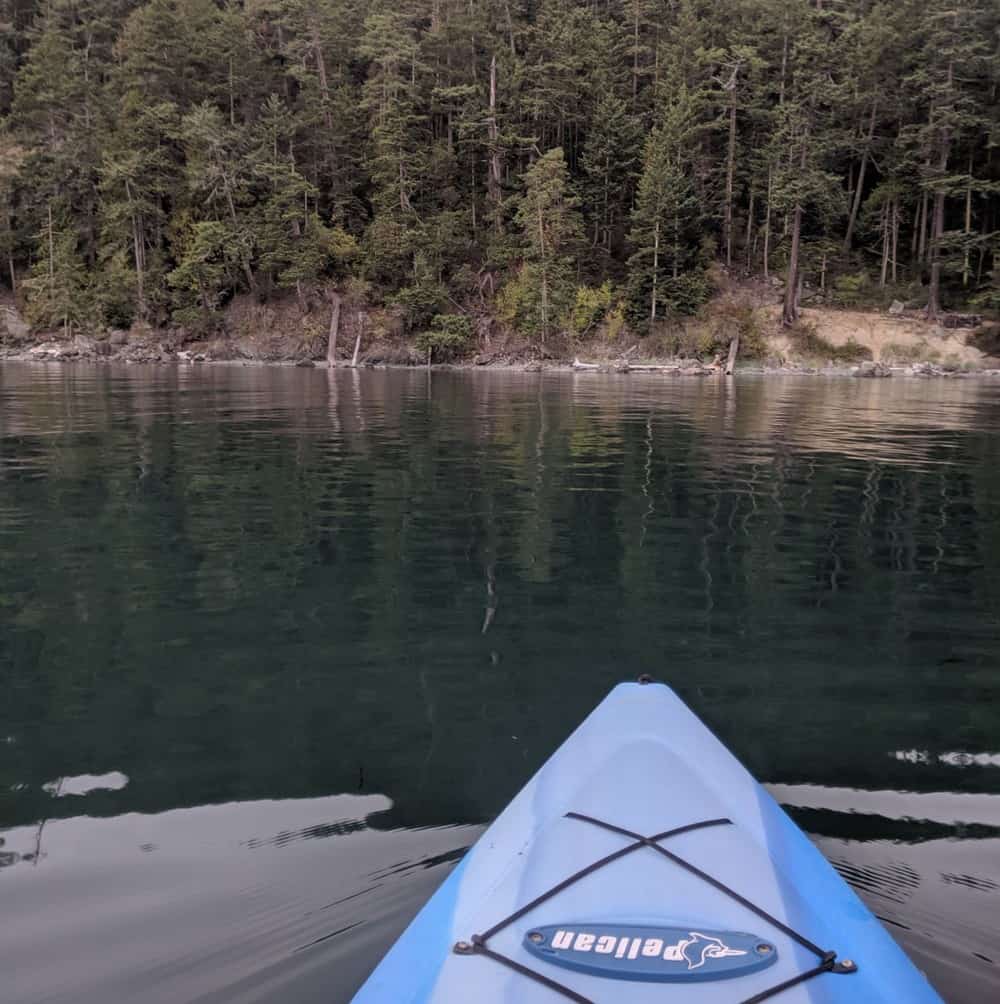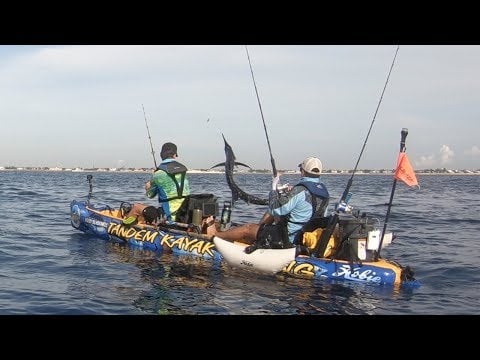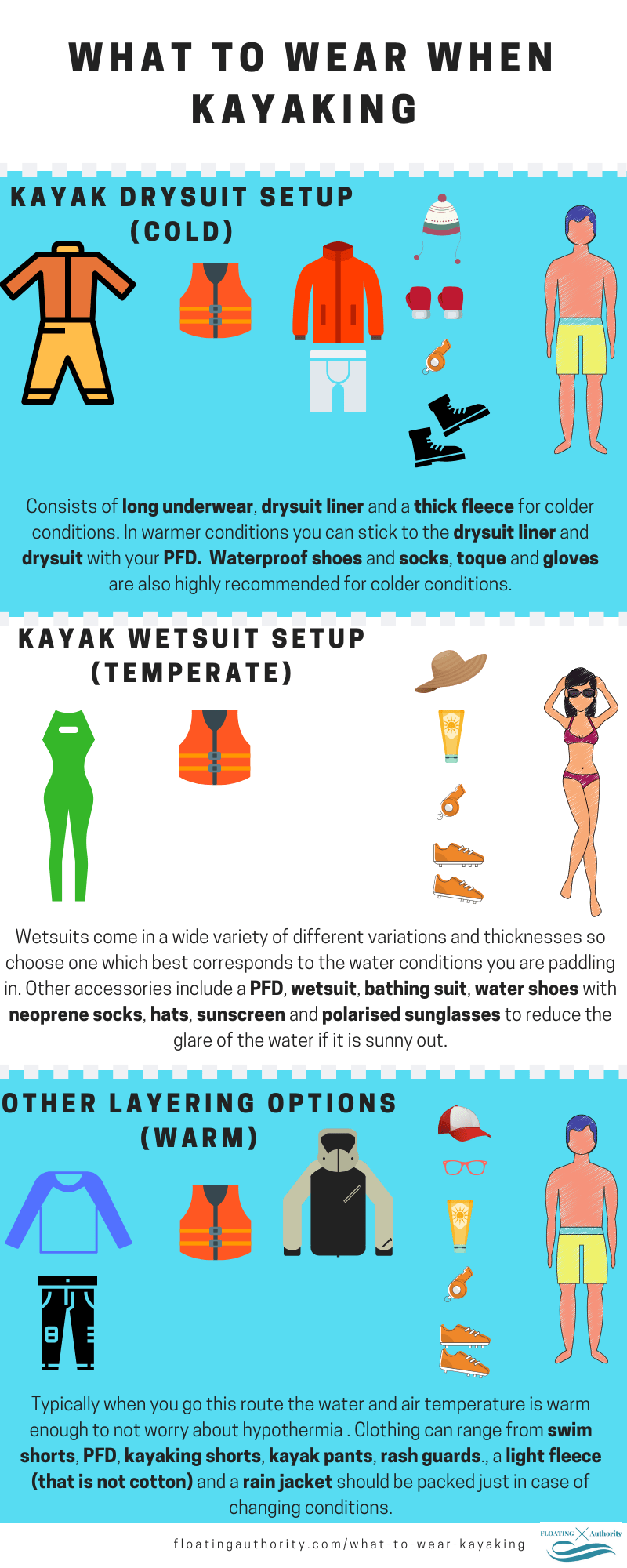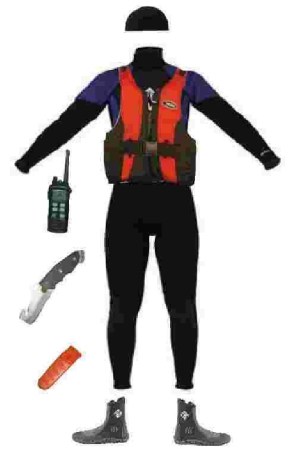Learn How To Kayak Like A Pro – A Step By Step Beginner’s Guide
KAYAK LIKE A PRO- BY: FLOATING AUTHORITY
Whether you’re planning on a simple day paddle, a fishing excursion or an aftenoon with friends and family. Kayaking can be an exciting and engaging activity that you can practice either alone or with a group of people. Since they’re smaller then other types of boats, kayaks can be difficult to get used to use the first few times.
Given the seemingly difficult process of first learning how to kayak, this complete guide can help you learn how to kayak like a pro. More specifically, you’ll find information about what you’ll need to get started, what type of kayak you should use for each type of different activity, and other information about how to move the kayak in general.
Before Getting Started
Since kayaking in general can be a difficult activity to get the hang of, regarding the different equipment that you need in addition to the knowledge of your surroundings and skill involved, you should make sure you understand a few factors before you plan on heading out for your first trip. More specifically, you’ll want to make sure that you have the right kind of kayak, you plan your route beforehand, and you spend the right amount of money depending on how often you want to use the kayak.
Decide What Kind Of Kayak You Want To Use
There are several different types of kayaks that you can choose from on the market, each of them having the ability to offer a wide variety of different benefits with their features. Because of that, you should make sure you’re choosing the right kind of kayak for your specific purposes.
Kayaks meant for recreational purposes areclassified as kayaks that have a closed cockpit and they have a larger opening than other types of kayaks. This allows you to have more room in the kayak for your personal belongings or to simply move around. They even have enough room for you to put another smaller child into the kayak with you.
These kayaks are shorter in length than other types of kayaks, since they’re usually less than 10 feet. By having a closed cockpit, you have the ability to either leave it closed or open it for your convenience. This is especially beneficial if you plan on kayaking all year-round in the different seasons. More specifically, you have the ability to close the cockpit during the winter months to prevent any cold water or wind from getting in, or you can leave it open during the warmer summer months to allow for a cool breeze to come through.
Not only that, but recreational kayaks tend to be cheaper than other types, since they’re shorter in length and they come with only the basic features needed in order for the kayak to function properly. You should keep in mind that recreational kayaks don’t have the ability to track well, since they’re shorter. So they can’t go as fast or as straight as other types of kayaks such as touring yaks..
Technically any kayak can be used for fishing purposes, but there are ones that offer better features that are specifically for the activity of fishing. For fishing, most fishing individuals would prefer sit-on-top, or SOT kayaks, since they’re safer for the activity of fishing. More specifically, stand up fishing kayaks have the ability to refrain from filling with water if they tip over.
Not only that, but SOT kayaks allow you to have more room to get comfortable on the boat, since they’re essentially flat on top and let you sit in whatever position you’re most comfortable with. You can even throw your legs over each side of the kayak in order to add for more stability while you’re utilizing the kayak. Some fishing individuals prefer to have sit-inside kayaks for fishing in waters that are more mobile, since this gives them a drier experience and they’re lighter in weight.
You should also consider a variety of other features in your specific kayaks when you’re searching for fishing purposes, like the length, width, weight, available storage, seating, and their ability to let you stand up when needed. Some advanced fishing kayaks even come with the ability to be powered by a propeller, so you don’t have to worry about using your hands in order to give the kayak energy.
Touring
 Touring kayaks are typically longer in length than other types of kayaks, since they measure usually around 12 feet long or longer. They have smaller cockpits and they are narrower than most other types, so they’re not recommended if you’re planning on kayaking with a large amount of other people. Because of their narrow shape, touring kayaks have the ability to travel fasterthrough the water than other types of kayaks.
Touring kayaks are typically longer in length than other types of kayaks, since they measure usually around 12 feet long or longer. They have smaller cockpits and they are narrower than most other types, so they’re not recommended if you’re planning on kayaking with a large amount of other people. Because of their narrow shape, touring kayaks have the ability to travel fasterthrough the water than other types of kayaks.
Not only that, but touring kayaks also have thigh braces that can be used in order to help you turn the kayak back over if you ever tip it over. These thigh braces essentially give you more control over the boat while you’re using it, since you can ultimately control the boat with your legs and arms.
You should keep in mind that these kayaks are more difficult to transport on your cars or trucks, since they’re so long compared to other types. Not only that, but they’re also more expensive than other types of kayaks, so you shouldn’t purchase one if you’re only planning on using it once or twice a year and aren’t very experienced. Rather, they’re recommended for longer trips that are planned for crossing larger bodies of water.
Plan Your Route
If you’re planning on taking your kayak out for a ride and enjoying the experience, then you may not think any route-planning is important for your trip. But it’s better safe than sorry before you go out, since it ensures safety and confidence in your trip.
The type of water that you plan on kayaking on is an important consideration for route-planning, since the layout of the water will essentially tell you how important it is that you stick to the plan. With lakes, you should make sure you as well as your partners are aware of the route ahead of time, since there isn’t one universal route available.
On the other hand, if you’re kayaking with a group of people on a stream or other sort of river, then the route plan is clearer than other bodies of water, since the water only goes one way most of the time. But you should still make sure you and your group know where the arrival and ending location is, especially if the waters are moving more rapidly than other types of water. You really shouldn’t kayak on any body of water alone, since that can be dangerous if you encounter trouble of any kind.
Getting The Kayak
Rent
Renting a kayak is recommended for you if you’re planning on going with a smaller group of people, and it involves you paying a monetary fee in order to use the kayak for a certain amount of time. You can usually do so by either renting a certain kayak from a business that’s located close to the body of water that you’re planning to kayak from. You may also rent kayaks from certain stores or from businesses that you prefer the brands of.
You should keep in mind that you have to return all of their equipment, so you may not feel as comfortable in the rented kayak as ones that you would own.
Own
You’re most recommended to purchase and own your kayak and equipment if you are known to go traveling in your kayak for either a long period of time or you go more often than not. This is essentially because renting or borrowing a kayak can be tedious, annoying, and pricey after a while. So if you’re a person that kayaks often and for long periods of time, then you should consider purchasing your kayak to own it for yourself.
This is the most expensive option, since you’ll have to pay the full price of the kayak. But you also have the option of making payments on the kayak in certain businesses if they offer.
Borrow
Borrowing a kayak either from a family member or a friend is ideal if you have friends that go kayaking often. This is the cheapest option, since your friends and family most likely won’t require a monetary fee from you for simply using their kayak. But you also have to deal with the inconvenience of only using their kayak when they allow you to do so. Not only that, but your friends and family members may only have a certain type of kayak, so you don’t have the option of choosing one that will accommodate for certain types of activities that you’ll be engaging with while using the kayak.
Safety Equipment
Essential Recreational Kayak Equipment
If you’re planning on using a recreational kayak for your trip, there are certain types of safety equipment that you’ll want to make sure that you bring on your trip.
PFDs
PFDs, also known as Personal Flotation Devices, are essential for practically every kayaking trip that you go on, since they’ll be able to prevent you from drowning if your kayak rolls over. They’re especially beneficial if you’re kayaking in rapid moving waters, since these waters are those in which you’re most likely to flip over. Not only that, but PFDs are beneficial if you’re going on a recreational kayaking trip in cooler waters, since they help to provide extra insulation while you’re in the colder water.
Flotation bags
It’s also recommended that you have flotation bags with you while you plan to go on every kayaking trip, since these bags are able to limit the amount of water that collects inside of your kayak if it tips over. These flotation bags are also able to keep your kayak high above the water while you’re boating in places that have a large amount of rocks, so they’re able to prevent swamping from occurring.
Spare paddle
It’s important that you consider taking along an extra paddle with you on your trip, since there is always the chance that you may drop your main paddle into the water, resulting in you having no other way to transport yourself across the water. Having a high quality space paddle can help prevent any unwanted circumstances from occurring.
Essential Fishing Kayak Equipment
Drypants
Perhaps the most important safety gear for a fishing kayak trip are fishing PFDs, since they help to keep you afloat while you’re fishing. You should always wear your PFD while you’re fishing, since they can provide you with extra safety measures just in case you end up tipping over.
Anchor
If you’re planning on fishing in your kayak, you should likely consider taking along an anchor with you. Anchors can help keep your kayak in place while you’re fishing in certain spots, so you can choose certain locations in a body of water that you may want to fish for longer periods of time.
VHF radio
If you’re fishing in your kayak or simply planning on staying in your kayak for longer periods of time, you may want to consider purchasing a VHF radio. These radios will help keep you in touch with the Coast Guards if any certain circumstances should occur. They also give you some information regarding the bar crossing that take place at ports or harbors that you may have in the particular bodies of water that you’re fishing at.
First-aid
It’s also important that you consider binging a first-aid kit with you on your fishing kayak trip, since you’re likely using fishing hooks and other types of sharp equipment. Not only that, but some fish even have sharper teeth that you may not be expecting, so you should make sure that you have a first aid kit handy just in case you encounter an injury.
Essential Touring Kayak Equipment
Spray skirts
Spray skirts are classified as barriers that are composed with a waterproof material that are able to prevent any of the exterior water surrounding the boat from entering the kayak. These skirts are able to cover your waist area as well as the kayak’s cockpit and rim, so they’re beneficial for touring. It should be mentioned that you should only wear a spray skirt if you know how to do a wet exit. A wet exit is when your body is sumberged underneath the kayak. Below is a video on how this looks.

Spray skirts are usually removable from the kayak, so you have the option to remove them from your boat if they make you uncomfortable or if you’re boating in a place that has water conditions that are more calm. They come in a variety of different designs and styles.
Helmets
You should always wear kayaking helmets when you’re planning on touring or white water kayaking, since both have the ability to travel at faster speeds throughout the water surrounded by rocks. They’re especially beneficial if you’re kayaking through bodies of water that have rocks and other debris sticking out from the water’s surface. You may even want to consider the specific type of kayaking helmets that are full faced (similar looking to motocross helmets).
Bilge pump
You should also make sure that you have a bilge pump with you on your touring kayak trip, since they can help to clear any water from the cockpit of your kayak. If enough water accumulates inside of the kayak’s pit, then it can add extra unneeded weight that can make your kayak go slower than others around you.
Whistle
Most kayaks don’t necessarily have a horn that you can honk on them to signal to other boaters, so having a whistle is highly recommended. It can act similarly to your car horn while you’re driving on the road, so they can prevent any accidents from occurring on the water. This is especially important for touring boats, since they’re able to travel at higher speeds and they also sit lower on the water than other boats, so they can be difficult to see in waters that have waves or where there are larger boats present .
Safety Precautions Before Heading Out

Make Sure You Learn Kayaking Techniques Before Going Out
You should try using the paddle in a pool or a smaller, more shallow pond before you go out onto a larger body of water with the kayak. This will help prevent you from encountering any hardships and not having the knowledge of what to do. You should allow yourself to gain some experience and practice before you go out onto larger bodies of water.
it should be noted that for more advanced kayaking like touring/ sea kayaking you should have a certified kayak instructor with you to teach you skills such as wet exits, advanced paddling strokes and of course in-water rescue techniques. There will probably be certified instructors somewhere close to your area to learn these techniques and further your kayak journey.
Always Wear Your Life Jacket
It’s usually the rules of most water locations that you wear your life jacket at all times, since it can prevent any dangerous and deadly circumstances from occurring. You may want to try your life jacket on before heading out onto the water, since you’ll want to make sure that it fits comfortably. You’ll be wearing it for long periods of time, so you should make sure that it’s comfortable enough that you can wear it for the entirety of the kayaking trip without wanting to take it off.
Keep In Mind The Temperatures Of The Water
Since there’s always a chance that you may be submerged into the water, you should make sure that you know what the temperatures of the water are. Make sure that you kayak carefully if you’re boating on a day that has colder temperature-water, since you may risk hypothermia if you fall in and can’t regain balance for longer periods of time.

Water Conditions And Currents
Pack Essentials
Don’t Kayak Alone
How To Kayak
Choosing Where To Dock
Getting In
How To Paddle And Paddling Techniques
In order to paddle correctly, you should make sure that you use the correct kayak paddle for the different types of paddling techniques you want to enact. To hold the kayak paddle correctly, hold the paddle above your head with your elbows at 90-degree angles. This technique will help ensure that your hands are in the correct positions.
To paddle correctly, you should understand that there are various types of strokes, including the forward stroke, sweep stroke, and backward stroke. To perform a forward stroke, place the paddle blade into the water near the front tip of the kayak and then glide it through the water until it reaches your hips, which you should then remove. You can then repeat this process on the other side of the kayak.
To perform a sweep stroke to turn your kayak a certain way, you can put your blade into the water at your toes and then sweep it in a “C” pattern. Make sure you draw a full “C” pattern so your kayak starts turning instead of going straight. You should keep your arm on the stroke side of the kayak as straight as possible to prevent the kayak from turning completely.
Lastly, to perform a backward stroke, you should perform the same opposite action as the forward stroke. You should put the tip of the paddle blade into the water located at your hips and then glide it through the water toward the front portion of the kayak.
Getting Out Of The Kayak
In order to properly get out of the kayak, you should paddle up to the shoreline or the dock and make sure that your kayak is steady. For a dock, you should put one end of the paddle on the dock and the other end on your kayak. Turn your body towards the dock and place both hands on it, and then lift your weight out of the kayak but you should make sure that your kayak doesn’t float away so keep the paddle in contact with it.
For the shoreline, you should simply paddle your kayak up to the shoreline and then stabilize your kayak with the paddle by keeping the paddle in the sand. Once you’re steady, you can get out of the kayak by placing both hands on each side of the cockpit and stepping your legs out one by one.
F.A.Q’s
What’s The Difference Between A Canoe And A Kayak?
A canoe is classified as a boat with only a single paddle and various benches for multiple people to sit on. A canoe also has more storage room since it presents an open cockpit design. In contrast, a kayak has a two-paddle handle that allows you to move faster through the water, and it has a smaller cockpit.
How Do I Avoid Capsizing?
Experienced kayakers can vouch for the fact that the kayak can flip over, and it happens quite frequently. They typically flip over because of an uneven weight distribution, so you should ensure that your weight is spread evenly throughout the kayak to avoid capsizing.
Final Thoughts
Overall, kayaking can offer you diverse benefits, including the ability to interact with nature one-on-one. Not only that, but it’s a fun activity you can do with your friends and family, and it costs you nothing if you’re simply borrowing a kayak from someone else.
Since it can take some practice to become a pro at kayaking, you should engage in the activity as much as you can. Also, reviewing this guide on how to kayak can help you ensure that you have the right equipment and the techniques and knowledge required to kayak properly. Have fun with the activity overall since it’s great exercise and allows you to engage with nature.
For more tips, visit https://outdoormagnet.com/best-kayak-fish-finder/ for a great article on finding your best kayak fish finder!
Last Updated on July




 Regardless of the temperature of the water, you should consider purchasing drypants to take on your fishing kayak trip. Since many fishing kayaks allow for a higher risk of you rolling your boat over, you have a higher potential of falling into the water. Given that, having drypants can prevent you from getting too cold if you do fall in.
Regardless of the temperature of the water, you should consider purchasing drypants to take on your fishing kayak trip. Since many fishing kayaks allow for a higher risk of you rolling your boat over, you have a higher potential of falling into the water. Given that, having drypants can prevent you from getting too cold if you do fall in.